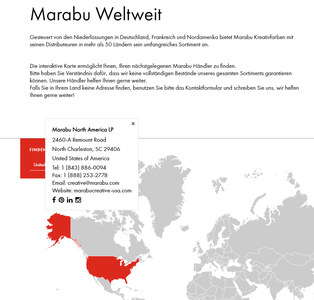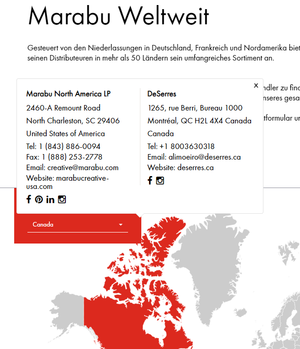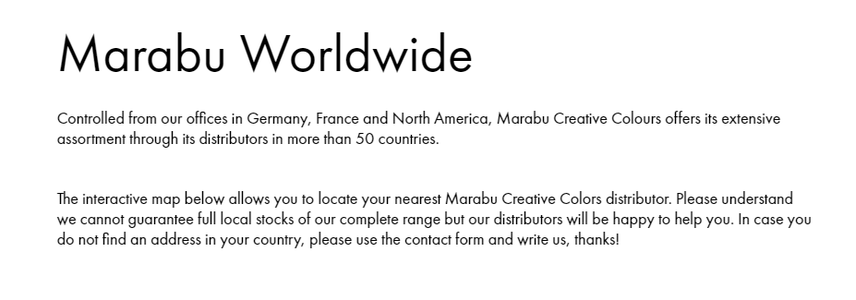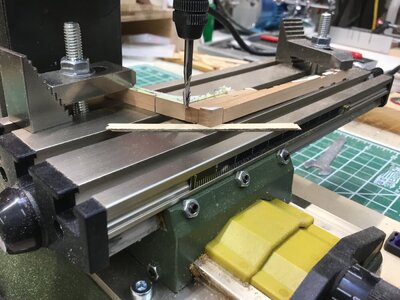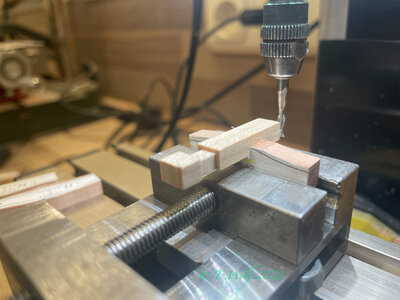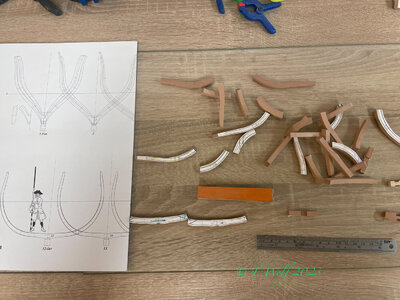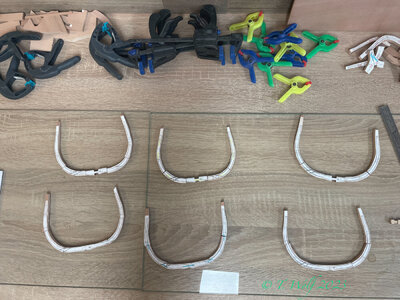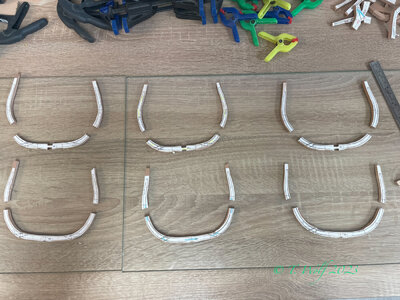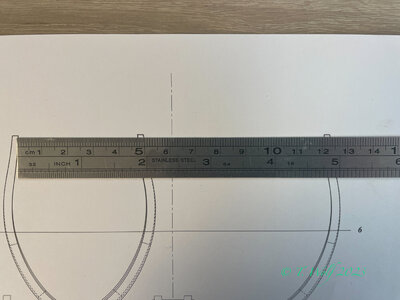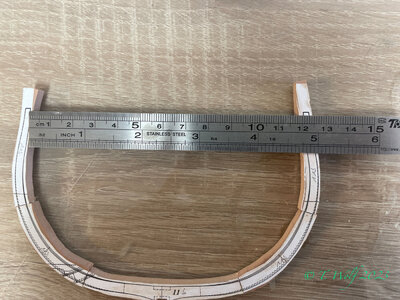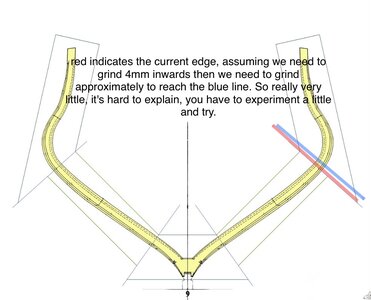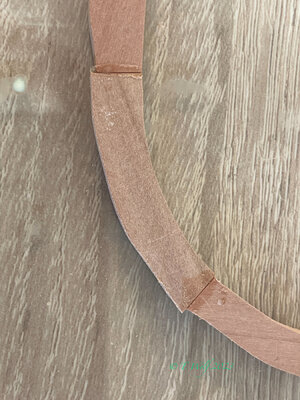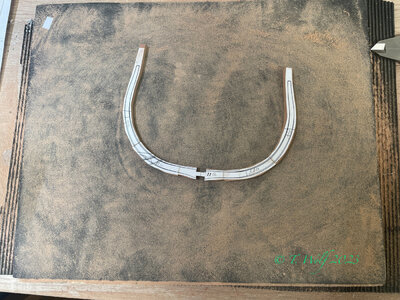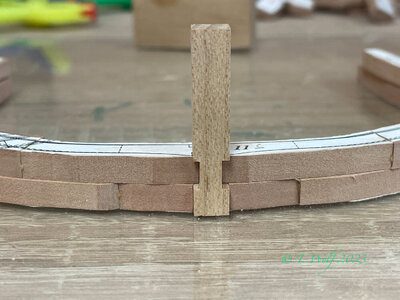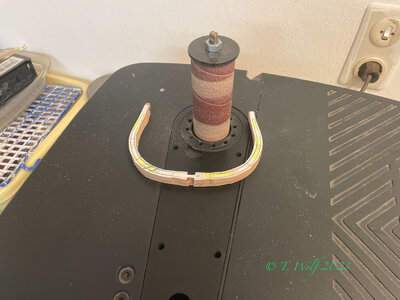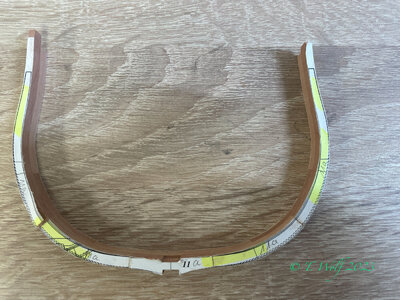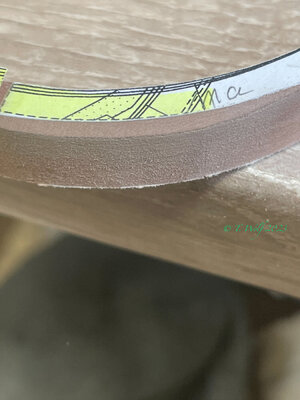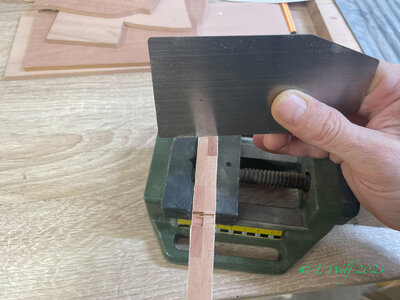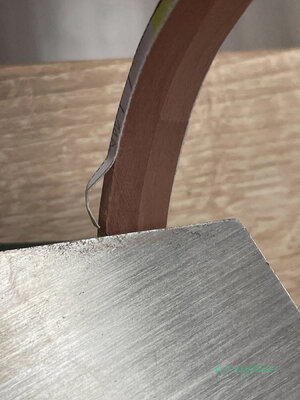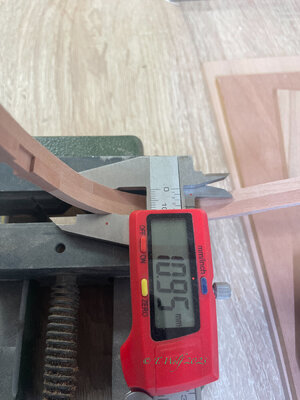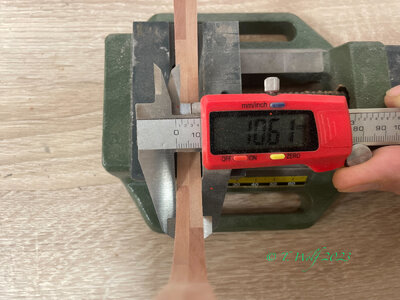Good evening everyone, Tony had a bit of a problem with the stern and it's about the taper of the stern.
On the one hand, this can be seen from the plans and, on the other hand, Adrian describes it in his book. Here are the pictures for the plan/book.
View attachment 348221
View attachment 348214
View attachment 348215
First you have to measure the overhang of the small triangle and then you need a small piece of wood that corresponds to the measurement and put it on the lower corner of the stern post. Now align your workpiece and clamp it.
View attachment 348216
View attachment 348217
Now position your milling cutter at the beginning of the taper and mill path by path up to the beginning of the triangle up to the upper end of the triangle.
View attachment 348222
View attachment 348213
Now it gets a little tricky since we have two different pitches, so place about half of the previous piece of wood under the other end and then continue routing to the first mark on the top small arch.
You do the whole thing on the other side too.
View attachment 348218
View attachment 348219







